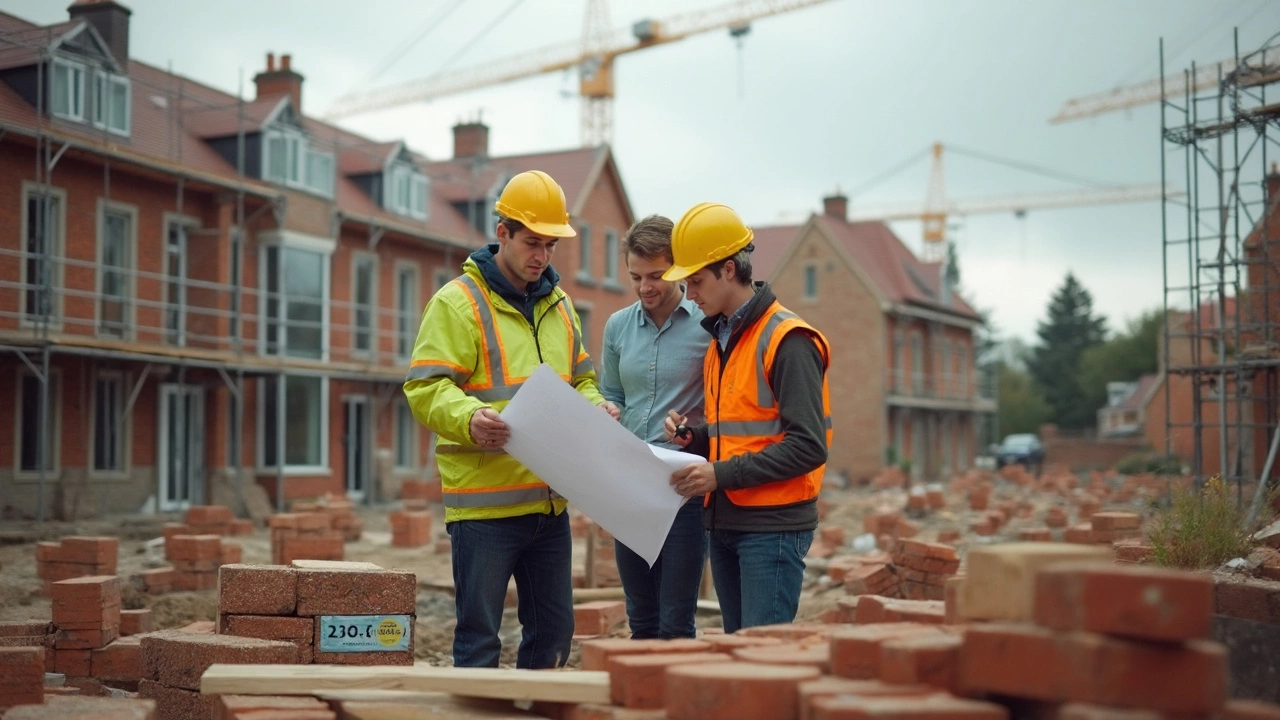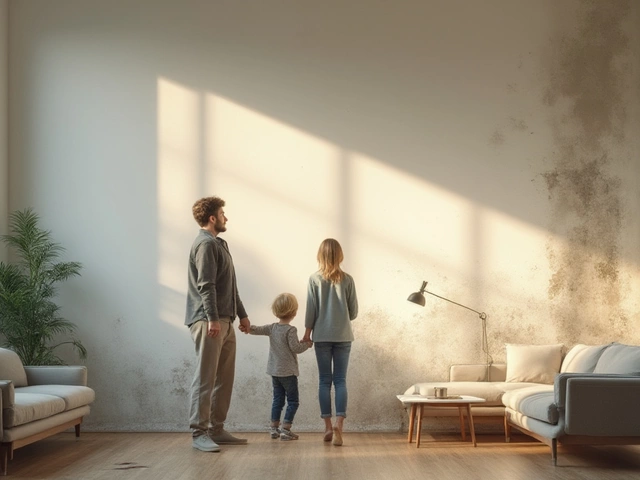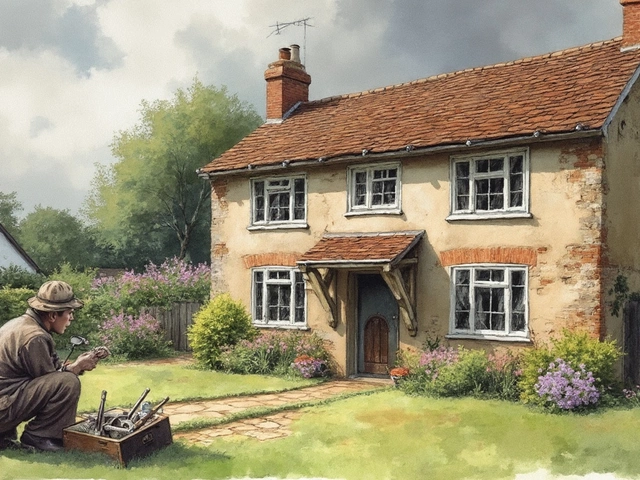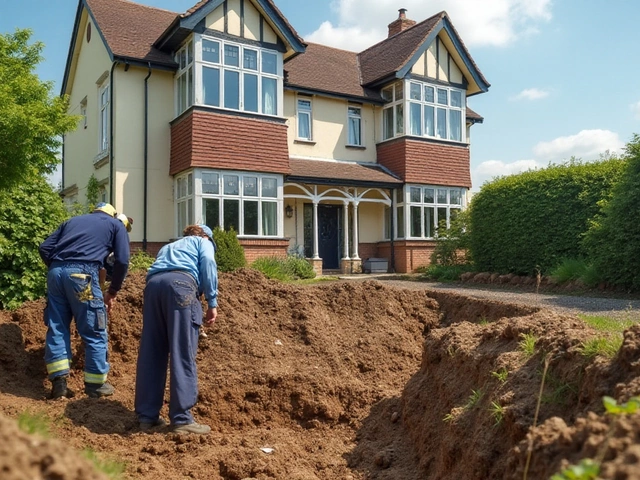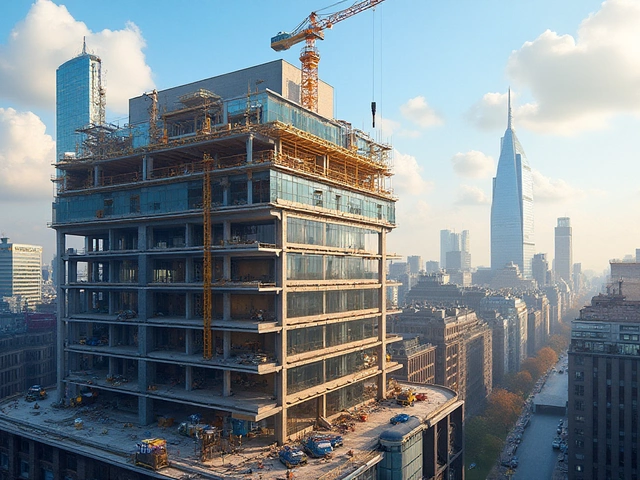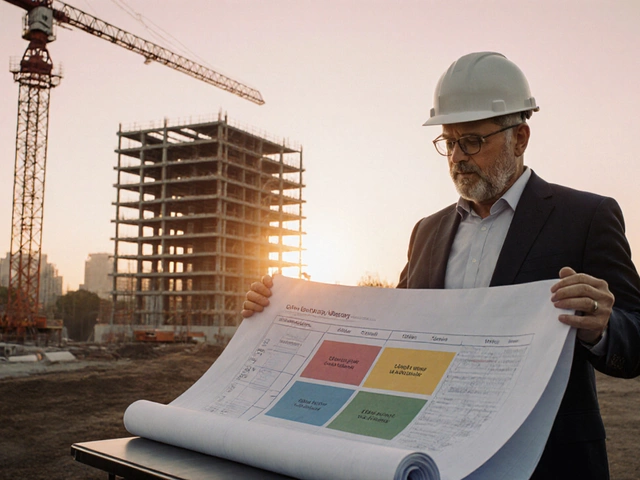Building a house sounds like a dream until you start checking your bank account and see those numbers add up fast. Sticker shock hits hard: basic material costs for things like lumber, concrete, and drywall have doubled or even tripled in the past few years. For example, just last summer, the price of lumber jumped so high that adding a simple deck could set you back thousands extra.
But it’s not just wood and bricks draining your budget. Even finding an empty lot can break the bank, especially if you want anything close to a city. Then you discover all the sneaky expenses nobody mentioned—permits, inspection fees, hookup charges for water and power, you name it. Each one looks small on paper, but together they can easily eat up months of extra savings.
If you’re curious where the money really goes, or if you’re hoping for ways to keep building costs from spinning out of control, you’re in the right place. Stick around for a breakdown of what’s truly bumping up prices and what you can actually do about it.
- Sticker Shock: Material Prices Keep Climbing
- The Land Trap: Paying for Dirt Isn’t Cheap
- Labor Shortages: Why Skilled Workers Cost More
- Permits and Hidden Fees: The Bills Nobody Warns You About
- Custom Choices and Upgrades: Small Details, Huge Price Tags
- How to Cut Costs Without Sacrificing Quality
Sticker Shock: Material Prices Keep Climbing
If you’re wondering what’s chewing up your house building cost these days, start with the raw materials. Lumber, steel, concrete, insulation—basically every basic building supply—has jumped in price since the pandemic. In 2021, lumber prices hit an all-time high, peaking at over $1,600 per thousand board feet. Even as they cooled off a bit, costs are still way above what they were five years ago, and it’s not just wood giving builders headaches.
Manufacturers blame everything from transportation bottlenecks to global supply chain drama. It’s not just talk either—delays at ports, worker shortages, and higher fuel prices are squeezing every link in the chain. Here’s how some of the usual suspects have changed:
| Material | 2019 Price | 2024 Price |
|---|---|---|
| Lumber (per 1,000 bd ft) | $400 | $800 |
| Steel (per ton) | $580 | $940 |
| Drywall (per 4x8 sheet) | $9 | $16 |
So, what does this mean for your new builds project? Every line item on the builder’s receipt is higher, and those increases get passed right to you. If your home design is heavy on concrete or steel, like with basements or big windows, expect even bigger budget knockouts.
One solid tip: some suppliers offer fixed-rate pricing if you commit early. It can feel risky, but locking prices before your build can defend against nasty surprises as costs climb. Another trick—talk to your builder about what's in stock locally. Relying on imported specialty products almost always brings sticker shock.
The Land Trap: Paying for Dirt Isn’t Cheap
You ever hear that old joke about buying dirt being the biggest expense? Turns out, it’s no joke. These days, grabbing a decent lot can easily swallow a quarter—or more—of your entire house building cost. If you want land near a big city or even a fast-growing suburb, the price can be even steeper. In some places like Austin, Texas, or outside Vancouver, Canada, the cost of just the land sometimes matches—or tops—the price to build the house itself. Average price per lot across the U.S. now sits above $55,000, according to the National Association of Home Builders, and that’s before you even put down a slab.
But that’s just the sticker price. Land comes with hidden extras most people don’t see coming:
- Zoning restrictions: Cities might only let you build certain types of homes, or force you to keep part of the lot empty. Changing zoning rules or getting variances costs both time and money.
- Site prep: You might need to clear trees, level ground, or truck in dirt before even pouring a foundation. Those costs can run from a few thousand to tens of thousands, depending on the land itself.
- Utilities: If the land doesn’t already have water or power hookups, you’ll have to pay for those too. People building in rural areas can get especially burned by this.
Check out this quick breakdown showing how lot costs add up in three popular states:
| State | Average Lot Cost (2024) | Estimated Site Prep & Utilities |
|---|---|---|
| Texas | $65,000 | $15,000 - $30,000 |
| Florida | $58,000 | $10,000 - $25,000 |
| California | $150,000 | $25,000 - $60,000 |
Want to keep the house building cost down? Don’t just focus on the price of the land. Ask about site prep, hidden zoning rules, and how easy it’ll be to hook up water and power. Sometimes, that “bargain” lot can turn into a serious money pit once you add everything together.
Labor Shortages: Why Skilled Workers Cost More
If you’ve heard from friends or family that it’s impossible to find a good builder right now, they aren’t making it up. There’s a serious shortage of skilled labor in home construction, and it’s hitting new builds extra hard. Builders, electricians, plumbers, and roofers—they’re all stretched thin. When there aren’t enough trained workers to go around, you can guess what happens next: prices go up, projects take longer, and you might even have to settle for less experienced crews if you’re on a tight timeline.
Why are there so few skilled workers? A lot of older tradespeople retired or left the industry after the 2008 recession, and not enough younger folks have stepped in. Trade schools don’t get the same attention as colleges, so kids just aren’t drawn to these jobs—even though they often pay solid money. According to the National Association of Home Builders, 2024 saw open construction jobs hovering near 400,000 across the U.S. That’s a lot of houses missing hands on deck.
This shortage drives up costs fast. When you don’t have enough framers or electricians, the workers you can get charge more because their schedules are packed. It’s classic supply and demand at work. Here’s a quick look at how worker shortages play into house building cost:
- Contractors compete for a smaller pool of talent, which means they offer higher wages and even bonuses.
- Delays stack up, making you pay more for equipment rentals and loan interest since your home isn’t finished on time.
- Rush jobs or lower-quality work become a risk if builders have to fill gaps with less-experienced workers.
One thing you can do? When checking quotes, ask how the builder is handling the labor shortage. Do they have a stable crew? Are they using reputable subcontractors? Quality work costs more, but the last thing you want is paying twice—once for cheap labor, and again for repairs when something goes wrong.
| Trade | Average Hourly Wage (2024) | Reported Shortage Level |
|---|---|---|
| Carpenter | $28 | High |
| Electrician | $31 | Extreme |
| Plumber | $30 | High |
If you’re budgeting for your new build, expect to spend more than you would have five years ago just to get reliable, skilled folks on your job site. And keep your eyes open for red flags—anyone offering “too cheap to be true” prices might cut corners that’ll come back to haunt you later.
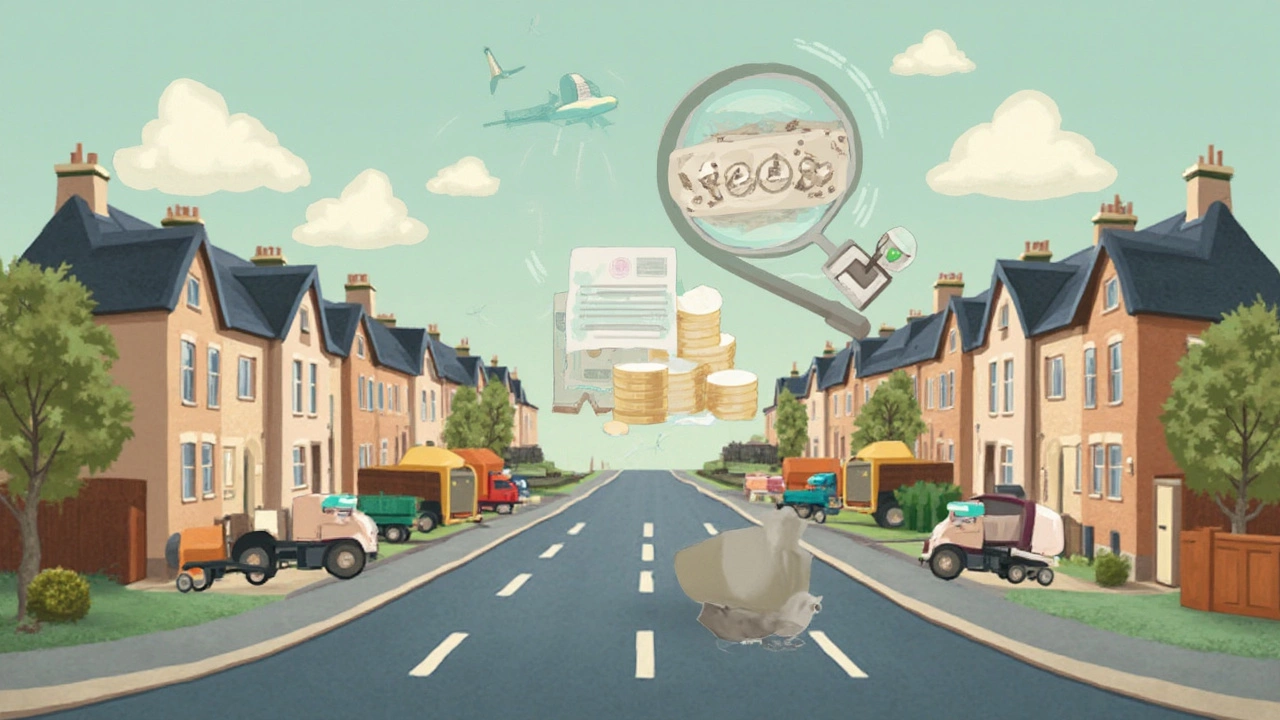
Permits and Hidden Fees: The Bills Nobody Warns You About
You hear “building permits” and probably picture paperwork and a simple fee. The real story? These little permissions can chew up a surprising chunk of your house building cost. The longer your project drags on, the more you pay too—some cities charge renewal fees if the build runs late.
Let’s talk numbers. The average permit for a new home in the US can run from $1,000 to $3,000, but in high-demand areas or cities with strict building codes, you might be staring down costs of $15,000 or more. And it’s never just one permit. You’ll need individual permits for water, sewer, electric hookups, and sometimes even a driveway or sidewalk.
- Impact fees: These are charges the city tacks on when you connect to local infrastructure—things like roads, parks, water systems. In fast-growing cities, these fees add $10,000 or more to your construction expenses before you even lay a foundation.
- Inspection fees: Every major stage (foundation, framing, electrical, plumbing) gets inspected. You pay for each of these, and sometimes for re-inspection if the inspector doesn’t like something.
- Utility hookup fees: Hooking your new build to electricity, gas, water, and sewer isn’t free. Even just connecting to city water can be over $2,000, and well/septic systems are often pricier.
- HOA and plan review fees: If your lot is in a community, your Homeowners' Association may charge to review your plans. City planning departments might bill you just to check if your blueprints follow local rules.
Don’t skip the “small stuff” either. Some areas hit you with fees for tree removal, soil tests, stormwater management, or even permission to park a dumpster on the street. Those surprise bills can add up to thousands.
| Permit or Fee Type | Typical Range (USD) |
|---|---|
| Building Permit | $1,000 - $15,000+ |
| Impact Fees | $3,000 - $15,000 |
| Utility Hookups | $2,000 - $10,000 |
| Inspections | $500 - $2,000 |
Tip: Double-check with your local building department for an up-to-date list of permits and fees. Ask your builder for a full cost rundown before you sign. A little research now can save you thousands—and a few headaches—down the road.
Custom Choices and Upgrades: Small Details, Huge Price Tags
This is where things really spiral. Sure, the base price for a new build covers essentials, but the moment you want something a little different—think better flooring, bigger kitchen island, or walk-in shower—the costs explode. Some people don’t realize that fancy backsplashes, quartz countertops, and even USB outlets add up quickly. Just swapping out the builder-grade carpet for hardwood can easily set you back $10,000 or more, depending on the size of the house.
Upgrades work like a menu at a pricey restaurant: the more you order, the bigger your bill. And it’s not just the obvious stuff like cabinets or appliances. Tiny changes, like recessed lighting or soft-close drawers, get rolled into your final bill and can make a real dent in your house building cost.
Here’s a look at how custom upgrades can affect your wallet:
- Kitchen upgrades: Premium cabinets, countertops, and smart appliances can add $20,000 or more above the basic options.
- Bathroom extras: Rainfall showers, double vanities, or upgraded tile can bump costs by $5,000–$15,000 per bathroom.
- Flooring choices: Hardwood, luxury vinyl, or tile is often 2–3 times pricier than carpet.
- Smart home features: Built-in security systems or smart thermostats can range from $2,000–$10,000 depending on how high-tech you want to get.
| Upgrade Area | Average Extra Cost |
|---|---|
| Kitchen | $20,000+ |
| Bathrooms (each) | $5,000–$15,000 |
| Flooring | $8,000–$25,000 |
| Smart Home Features | $2,000–$10,000 |
It’s easy to get carried away when designing your dream home. Builders often present upgrade lists that make basics look bland, pushing you toward pricier options. If your home budget matters (and for most people, it does), pick what’ll truly make your day-to-day life better. Sometimes, spending extra on a spot you use every day, like the kitchen, makes sense. Just remember—everything comes with a price tag, and a bunch of small custom touches can easily top what you thought you’d spend on your whole new build.
How to Cut Costs Without Sacrificing Quality
Cutting costs when building a house doesn’t mean you have to end up with subpar work or regret your decisions down the road. The trick is to make smarter choices at every step that directly impact your house building cost and still give you a solid, comfortable home.
- Stick to a simple design. Complex shapes, weird angles, and fancy layouts all mean more work—and higher bills. A simple rectangular or square footprint is not only cheaper to build but also easier to heat, cool, and maintain.
- Choose materials that last, not just the cheapest option. For example, vinyl siding is less expensive upfront than brick, but brick might save maintenance and replacement costs over the years. Always weigh upfront price versus long-term durability.
- Go energy-efficient from the start. Proper insulation, double-paned windows, and energy-star appliances don’t just cut your utility bills; many local governments offer rebates or tax credits for using them. Over the course of living in the house, these upgrades pay for themselves.
- Compare multiple bids for each major job. It’s tempting to just pick the first contractor you talk to, but prices can vary by thousands. Make sure you’re clear about what’s included in each bid—sometimes the cheapest quote skips important pieces that you’ll get billed for later.
- DIY what you're comfortable with, but don’t overdo it. Painting, landscaping, or even assembling flat-pack cabinets are manageable for most people. But anything structural or electrical? Leave that to the pros, or it could cost more to fix mistakes later.
Now, here’s a look at how much certain choices can impact your home budget when building new:
| Feature | Low-Cost Choice | High-End Choice | Typical Price Difference |
|---|---|---|---|
| Flooring | Laminated Wood | Solid Hardwood | $7,000 - $15,000 |
| Countertops | Laminate | Granite or Quartz | $3,000 - $8,000 |
| Windows | Standard Vinyl | Custom Wood | $6,000 - $15,000 |
| Roofing | Asphalt Shingles | Metal or Tile | $8,000 - $25,000 |
If you’re not careful, it’s easy to bust your new builds budget just by upgrading a few of these features. Go for value, not just flash. Think about where you spend the most time in the house and invest there—maybe the kitchen or main living room—while keeping the rest simple. That way, you get quality where it counts without losing control of your spend.
